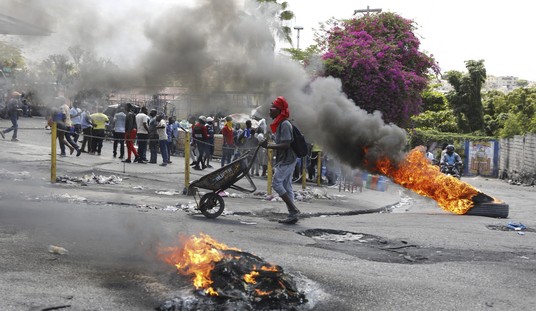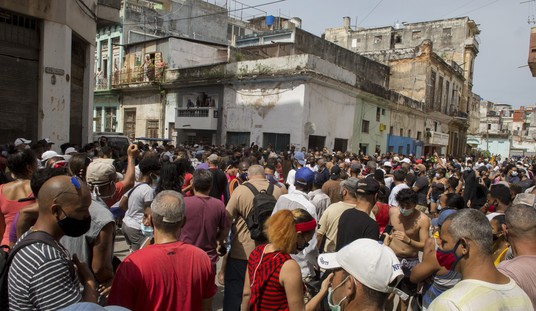Jim Geraghty got an e-mail from a reader who crunched the numbers thus far in the early-voting states, and the news looks pretty encouraging so far from the GOP. Comparing the numbers from 2008, Geraghty’s reader says that in seven key states, Republicans have improved their performance in turnout for early voting thus far by almost 15 points, a stunning turnaround and one that may put the likely-voter models used by even the best pollsters in doubt. The smallest gain is 4.2% in West Virginia, where even Democrats are breaking towards the GOP, to a 27-point gain in Florida, where over half of all early voting has been Republicans.
Both Florida and West Virginia are key states, but there are a couple more on Jim’s list. In Colorado, where voters have to choose a governor and a Senator, Republican ballots increased over 7 points from the 2008 early voting. That will be good news for Ken Buck for his Senate race and perhaps even Tom Tancredo in his independent bid for governor, both in tight races. In Nevada, the Clark County vote (which includes Las Vegas) shows an increase of 7 points for Republicans, and in Washoe County (Reno, Tahoe) the GOP have increased over 11 points in early-voting turnout. That’s good news for Sharron Angle, and really bad news for Harry Reid.
Pollsters expected a more robust Republican turnout in 2010 than in 2008, of course. In analyzing most of their likely-voter models in the last few weeks, it’s clear that they didn’t expect a +15 in the gap from 2008. Many of them have been arguing that Democrats had begun closing that gap in the last two weeks. Assuming that holds up not just in early voting but also in Election Day turnout (as well as absentee ballots, which get counted on Election Day and not as early voting), then most of the likely-voter models will have significantly underestimated the Republican wave, even apart from the right turn of the independents. Even if GOP turnout on Election Day turns out to be half as significant, the likely voter models will still have left the polls short of the amplitude of the wave that’s coming.
Update: The Washington Post looks instead at Michigan and California and come to a different conclusion:
In an election year when good news has been scarce for Democrats, anxious party strategists are heartened by at least one development: In states that have started voting, early indications are that Democratic turnout could be stronger than expected.
Despite the much-discussed “enthusiasm gap,” early balloting suggests that the voter turnout engine that Barack Obama revved up in 2008 has not sputtered out entirely, according to the Atlas Project, a Democratic consulting firm that analyzed voter data.
The firm told its clients Friday that early ballots in the 17 states where voting has been sufficient to draw historical comparisons show a partisan balance that looks very much like that in 2006, the year Democrats took back the House and the Senate.
This is a different measure than Jim’s e-mailer uses, which was 2008 — a presidential election in which Democrats turned out strongly. The Post focuses on California, which should have been safely Democrat if normal trends held:
In California, the Atlas Project’s analysis suggests that Democrats account for 42.9 percent of the more than 1 million ballots cast thus far, which means they are running slightly ahead of the 41.4 percent they got in 2006. By comparison, Republicans have cast an estimated 39.7 percent of the early California ballots, which is down slightly from the 40.9 percent they got four years ago.
However, Republicans in California note that Democratic registration overall has grown dramatically in the state. Democrats now have a 13-point edge, which is five points more than it was four years ago.
One thing is certainly true — we’re going to know for sure in ten days.








Join the conversation as a VIP Member